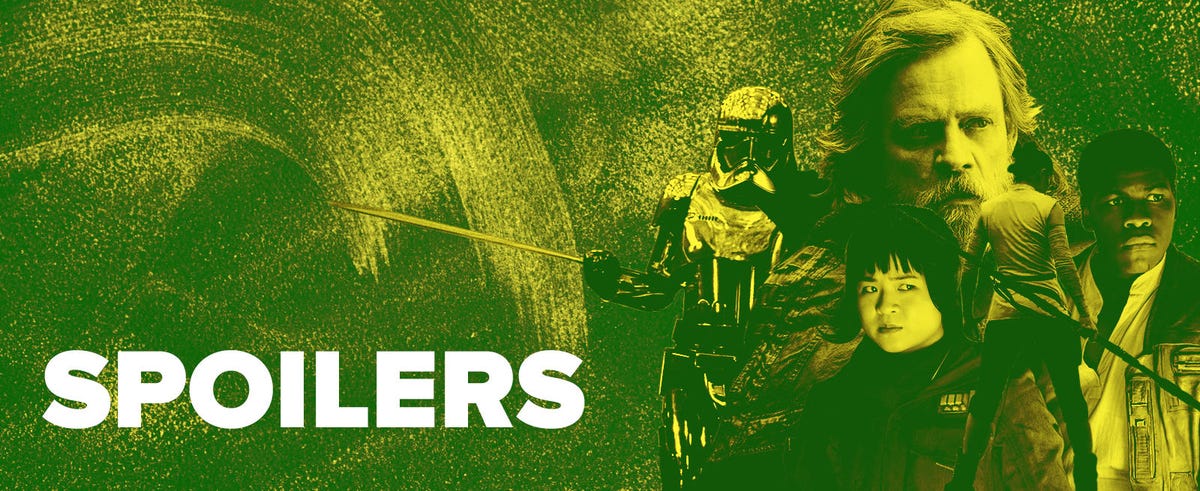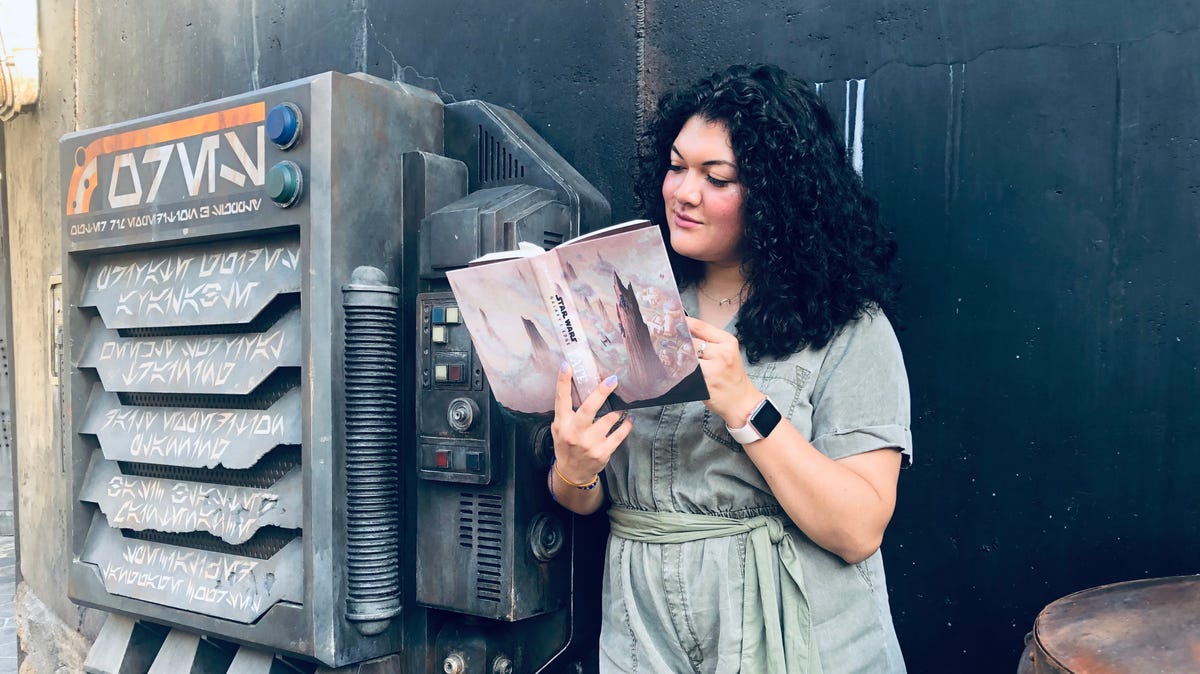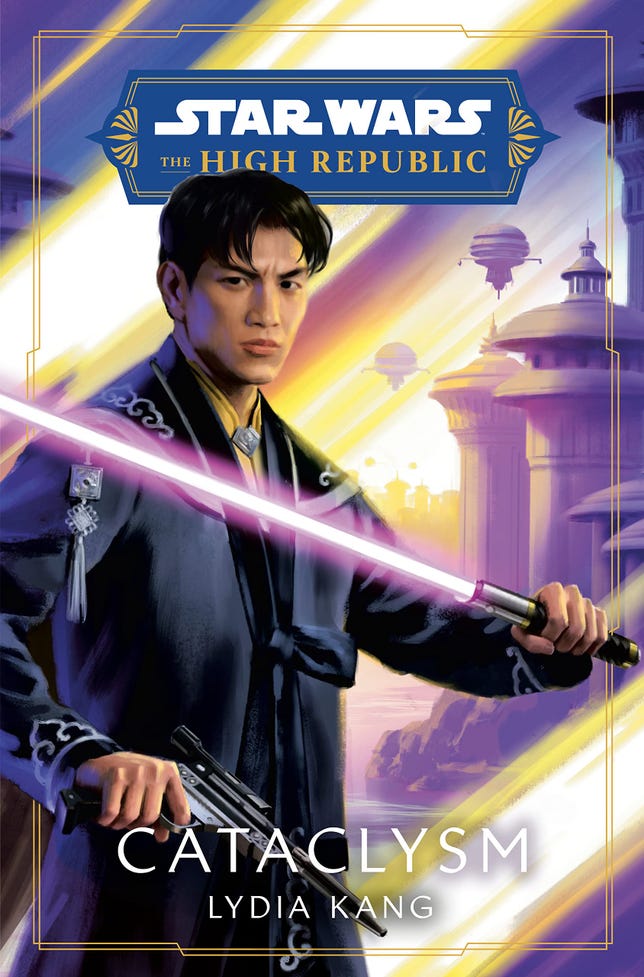Star Wars: Convergence brought us into a new era of a galaxy far, far away last month. It’s the first adult novel in the High Republic era’s Phase 2, which takes place 350 years before the Skywalker Saga.

Gella Nattai proves a compelling protagonist, but not all of Star Wars: Convergence’s characters are as strong as her.
Penguin Random HouseThe story follows Jedi Knight Gella Nattai as she investigates a plot to assassinate the heirs of royal families from Eiram and E’ronoh, neighboring worlds at war. She’s forced to team up with Axel Greylark, the arrogant son of a Republic chancellor, despite his mistrust of Jedi.
It’s written by the engaging Zoraida Córdova, whose previous Star Wars work includes A Crash of Fate and stories in anthologies like From a Certain Point of View: A New Hope, The Empire Strikes Back and The Clone Wars: Stories of Light and Dark.
The Ecuador-born writer is also known for the Brooklyn Brujas series, as well as The Inheritance of Orquídea Divina.
I got to have a spoiler-filled chat about the novel’s twists and turns with Córdova, who’s based in New York City. We discussed Gella’s ability to use her emotions, the inspiration behind Axel Greylark and how her book sets up other High Republic stories.
Full SPOILERS for the novel lie ahead, so I’d recommend waiting until you’ve finished the book to proceed. Here’s a transcript of our conversation, lightly edited for clarity.


Q. Writing the opening adult novel of Phase 2 must have felt like a big responsibility. What did you hope to achieve?
Córdova: It was about setting the scene for these two planets, establishing the role of the Jedi and the Republic, and how they are working together before a time where we actually have seen them collaborate in such a way. I wanted to show different aspects of the Jedi through Gella Nattai and how using your emotions can be a good thing. And I wanted to develop the landscape and culture of two different planets, because one thing that we love about Star Wars is that we get to see these wonderful worlds.
Eiram and E’ronoh are fascinating locations. How much of their development was left up to you and how much of that was prescribed? My understanding is that, with Star Wars novels, authors have a lot of creative freedom and autonomy.
I’ve done a lot of intellectual property work for brands, and it’s surprising how, with Star Wars, you almost have a little bit more room to play with. [Lucasfilm Publishing boss Michael Siglain] and our team are more willing to say “Oh, that’s cool, let’s bring that in.” All I knew about them going in was that there’s a desert planet, but not sand desert, and an oceanic world. That’s established in Phase 1. We very briefly saw them and we know where they are.
With E’ronoh specifically, it’s a very arid world. For the geography of it, I was really inspired by the Southwest of the United States, where it’s all these giant rock formations. And the idea that, not only are Eiram and E’ronoh in a fight with each other, but they’re also fighting with their own planets. They’re struggling to have the basics, and how do you fight a war, while your own planet is trying to kill you? You don’t have fresh water on Eiram, desalination plants won’t be around until the Phase 1 era. Is it responsible to even have a war going on while you’re fighting the basic elements? And as we see, people in E’ronoh start to rise up against the monarch.
For me, it was important to show the younger generation standing up to the older generation and saying “OK, well, I’m tired of war, we have to do something different.”


Author Zoraida Córdova wanted to take a new perspective on what it means to be a Jedi.
Lyssa HurvitzGella was a lot more emotional than we’ve seen with most Jedi, particularly in the Clone Wars era. Why did it work for her?
The Jedi can’t just be these robots going through the galaxy, because the thing that makes them great guardians of peace is the idea that they care enough to fight for light and life. With Gella, it just made sense to show somebody who wants to be the best Jedi. People can relate to this idea of aspiring to be something, and sometimes you’re gonna mess up along the way as you try to be the best that you can be.
We all have this idea that you can only be a Jedi if you’re a certain way. How does it work for somebody if they choose a different path, but still end up at the same result?
It feels like Gella’s decision to become a Wayseeker (a Jedi who operates independently of the Jedi Council) at the end of this story ties into this?
Yeah, Gella’s decision to become a Wayseeker fits into her asking “How can I still be a Jedi and fulfill my mission, but do it on my own terms?” Meeting Axel Greylark challenged her idea about how Jedi are supposed to be. She desperately wants to learn, and there’s only so much you can learn in school. It’s like getting your Ph.D. on how to become a Jedi and then realizing maybe you need to go to the school of hard knocks.


Axel Greylark will return in Star Wars: Cataclysm, which comes out next April.
Penguin Random HouseHow did you develop Axel Greylark?
I had this idea of looking at Star Wars archetypes, and arrived at “What if Han Solo had been raised wealthy?” That changes the kind of person that he becomes. Here’s like a person who has everything, and yet they make choices that hurt people. And so can you be a good person and hurt somebody? How can you be influenced by somebody like a cult leader?
The novel only touches upon Axel’s relationship with the Mother [the leader of the Path of the Open Hand, a cult that believes no one should manipulate the Force]. How did you go about including them in this novel in such a circumspect way?
There’s this idea that Axel, as a wayward guy in the galaxy, sort of lost, is among the most vulnerable people when he comes across like someone like the Mother — all of that is subtext in this book. There are other stories where we get to see how the Path of the Open Hand really worked [like Tessa Gratton and Justina Ireland’s novel Path of Deceit].
But here I wanted to show how somebody’s machinations, which we see in Star Wars a lot, are influencing something as huge as a civil war between two planets. Axel thinks that he’s in control of everything, but at the end of the day, he’s just a pawn. Which is kind of tragic, because he changes his mind about the Jedi at the very last minute [as he falls in love with Gella].
Convergence shows what they’re capable of doing in the shadows. In [George Mann’s audiobook The Battle of Jedha, and Lydia Kang’s novel Cataclysm, which come out Jan. 4 and April 4 respectively] we’re gonna see how they work in the light.
How does the planning come around with this? How do the authors communicate?
We have a very secret slack among the authors, no executives allowed. We ask ourselves “Are you using this character? What did you do here?” We keep the continuity through other secret documents, but for the micro story elements, we need to just remind each other. So that is a little chaotic, but in a good way.


